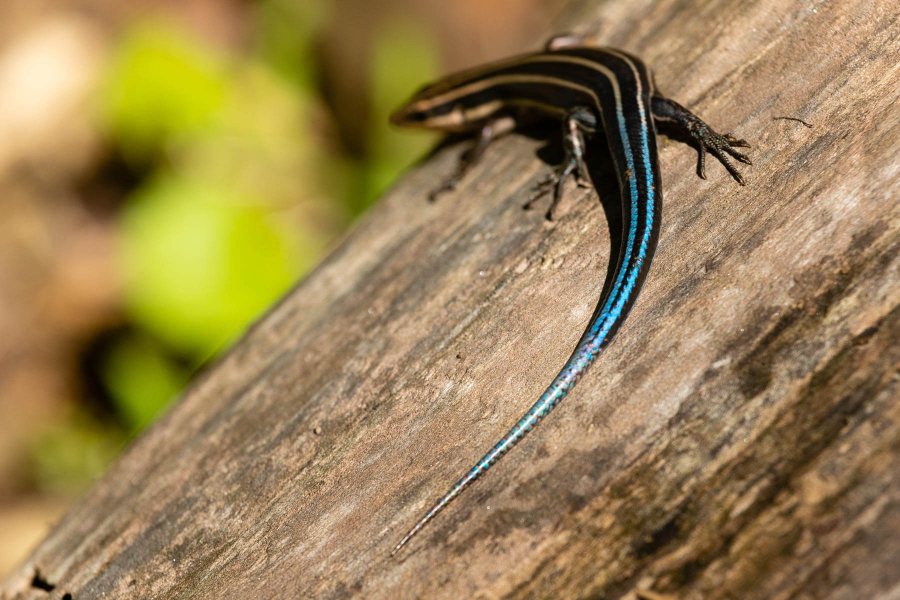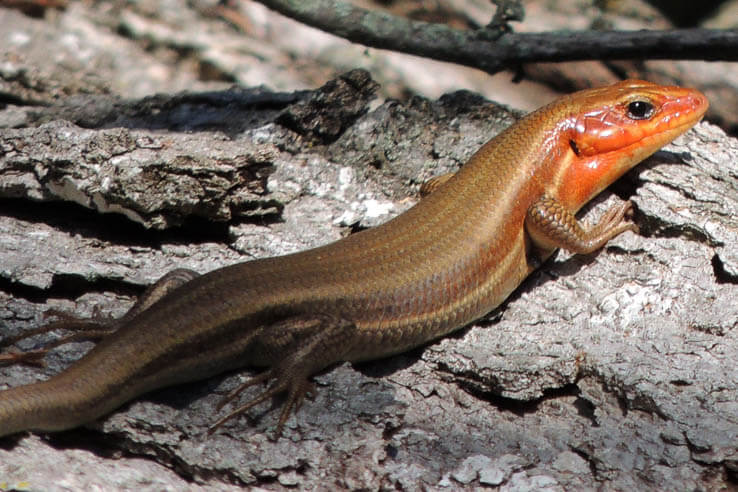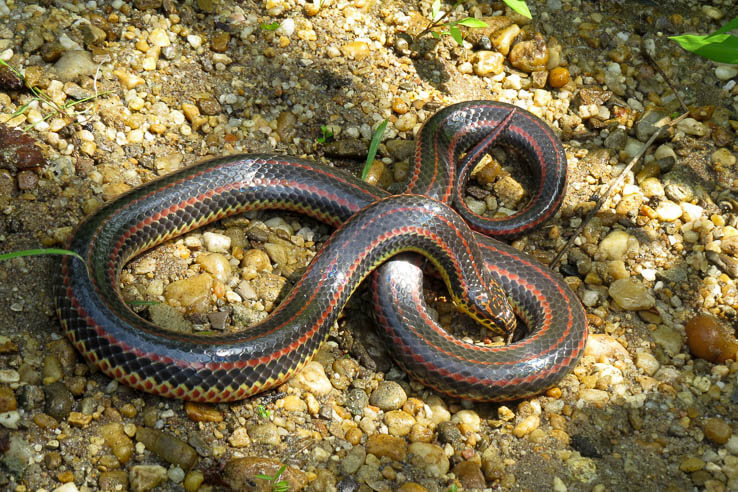Rainbow scales and colorful tails
Get to know the Bay’s colorful collection of reptiles and amphibians

From the true-blue feathers of its eastern bluebirds to the orange wings of its Monarch butterflies, the Chesapeake Bay watershed is home to a variety of colorful critters. But birds and insects aren’t the Bay’s only eye-popping residents.
The Bay watershed is home to hundreds of species of reptiles and amphibians which offer some of the region’s boldest looks. Here are three stunning species you may want to look out for.

Broad-headed skink
With a bright blue tail, the juvenile broad-headed skink is as vibrant as they come. The blue tail helps divert predators’ attention away from the skink's head and body. Like many lizards, the broad-headed skink’s tail detaches easily, allowing it to escape predation when caught by its tail. As they mature, skinks’ tails typically fade to a uniform olive-brown. During mating season, the adult male skink’s head swells and turns a deep orange-red, signaling to females that it is ready to mate. This colorful lizard was once thought to be highly venomous, earning it the nickname of “scorpion.” In reality, the broad-headed skink is non-venomous and completely harmless.
Broad-headed skinks are found throughout the Bay watershed’s wooded area. If you are looking to find one for yourself, you might want to try looking up. Broad-headed skinks often climb trees and can often be found soaking in the sun on high branches.

Northern red salamander
Few amphibians will grab your attention quite like the northern red salamander. The salamander’s fiery, orange-red skin is its way of communicating that it is poisonous and ought to be left alone. The northern red salamander secretes a toxic protein that can be harmful when ingested, and predators will generally avoid them.
Northern red salamanders are found in and around streams, creeks and springs throughout the region. Because they are highly sensitive to changes in water quality, northern red salamanders are excellent indicators of stream health. Fewer northern red salamanders is usually an early indicator that a stream has become polluted.

Rainbow snake
One of the Bay’s most vibrant reptiles is also its most elusive. With glossy, iridescent scales ranging from a bright red to a blackish-blue, the aptly-named rainbow snake is one of the watershed’s rarest reptiles. While beautiful, the rainbow snake’s flashy scales make it a highly visible target for predators and they can usually be found hiding under floating vegetation or burrowed beneath the moist sand of a stream bank. Rainbow snakes are non-venomous and are rarely aggressive.
The rainbow snake can be found along streams, swamps and marshes throughout southern Maryland and eastern Virginia. Maryland considers them to be an endangered species. If you spot a rainbow snake in the wild, the Maryland Department of Natural Resources asks that you report it.
Learn about these animals and more in our Field Guide.

Comments
What a wonderful picture of our bay. Something new to discover!
Thank you!
Your comment has been received. Before it can be published, the comment will be reviewed by our team to ensure it adheres with our rules of engagement.
Back to recent stories